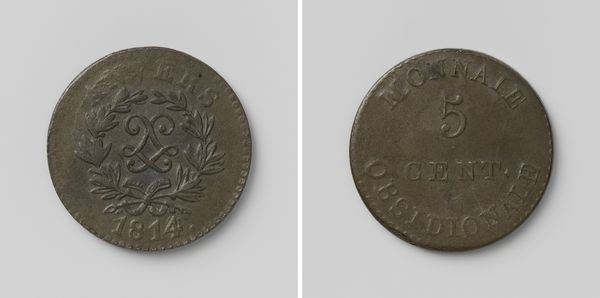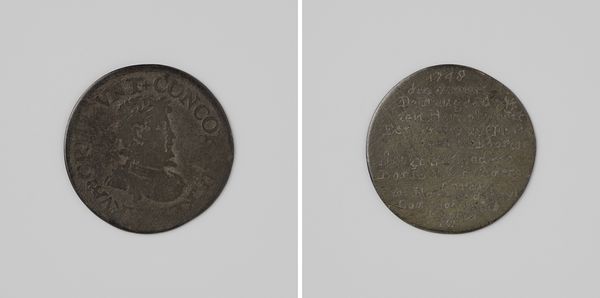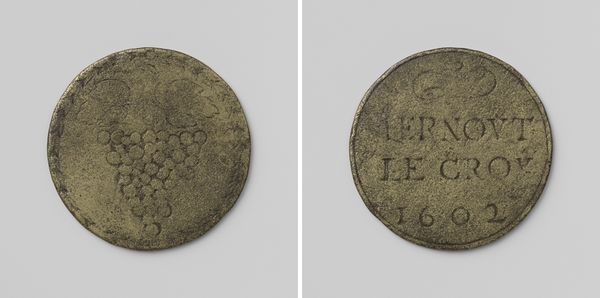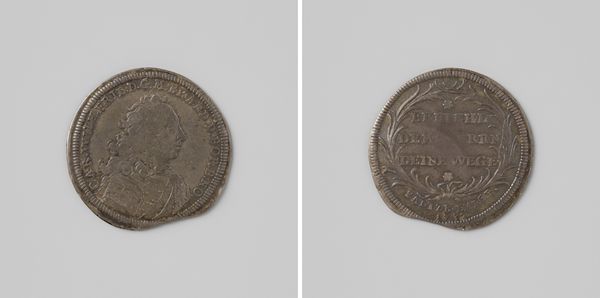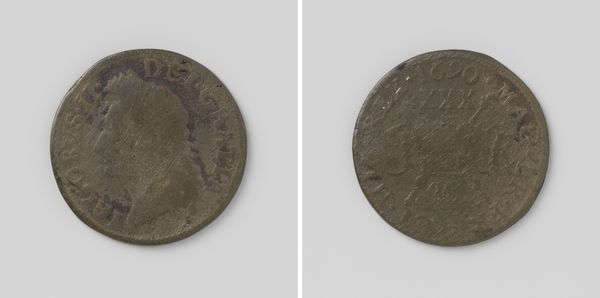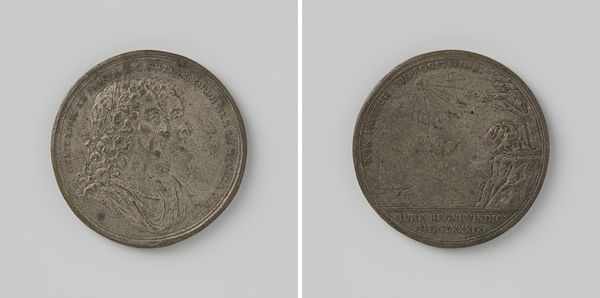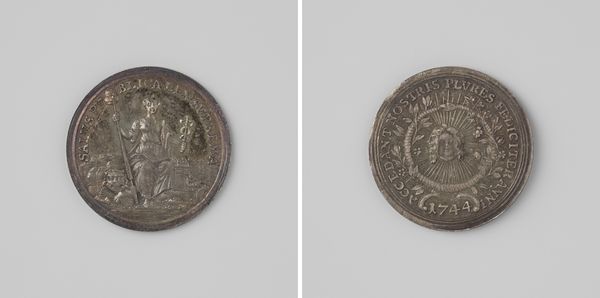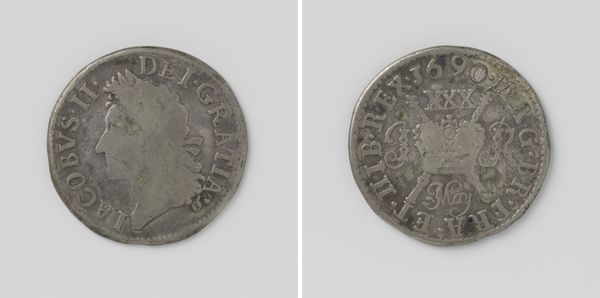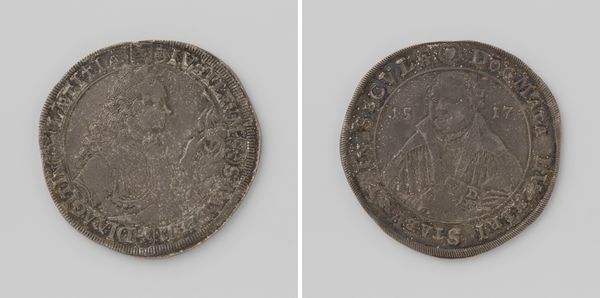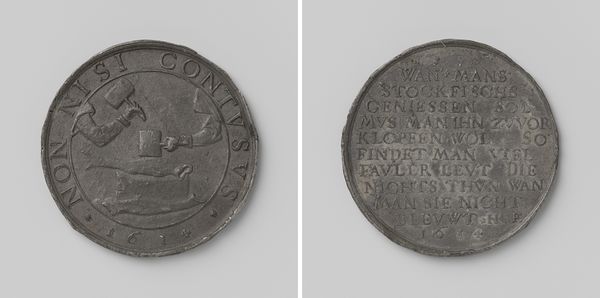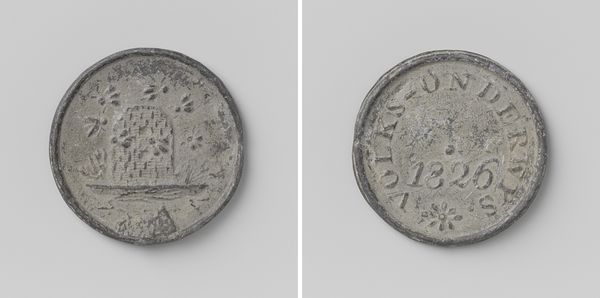
Shilling, noodmunt van Jacobus II, koning van Engeland, uit maart 1689 1689
0:00
0:00
metal, engraving
#
portrait
#
metal
#
ancient-mediterranean
#
history-painting
#
engraving
Dimensions: diameter 2.5 cm, weight 5.88 gr
Copyright: Rijks Museum: Open Domain
This shilling, a so-called noodmunt, or necessity coin, was issued in March 1689 for Jacobus II, King of England. The anonymous maker worked with base metals, a far cry from the gold and silver usually associated with coinage. The coin’s humble material speaks to its turbulent origins. James II’s reign was under threat; he was deposed in the Glorious Revolution in 1688. This shilling was struck in Dublin, during the Jacobite war in Ireland. It was made of whatever metal was available, including old cannons and church bells. You can see how the rough material has influenced the coin’s appearance, the surface is pitted and uneven, the lettering somewhat crude. The process of striking coins, even under duress, speaks to a highly organized system of production. Dies would have been engraved, blanks cut, and the coins hammered or pressed. This was not an ad hoc operation, but a desperate measure taken in a time of crisis, reflecting the intersection of political upheaval and economic necessity. So next time you encounter a coin, think not just about its monetary value, but the story of its making.
Comments
No comments
Be the first to comment and join the conversation on the ultimate creative platform.
